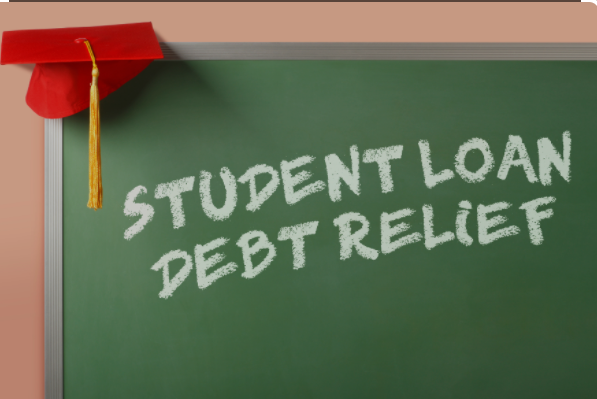Income-driven repayment (IDR) plans were considered a fix to a broken student loan system, offering borrowers monthly payments based income, unlike standard payment plans.
An additional benefit of IDR plans was that after 20-25 years of repayments, the remaining balance would be discharged.
However, over 4.4 million borrowers have been in repayment for more than 20 years and haven’t received discharge.
“Borrower participation in income-based repayment plans was stunted by confounding complexity, bad management, and predatory practices on the part of loan servicers,” Andre M. Perry, a senior fellow at the Brookings Institute, said in a recent article.
Last April, Biden announced an IDR reform one-time payment adjustment to remedy decades of forbearance steering on behalf of loan servicers.
The adjustments are separate from Biden’s up to $20,000 in student loan forgiveness and aren’t contingent on the outcome of the Supreme Court cases.
Borrowers who have at least 20 or 25 years in repayment will see automatic forgiveness, even if those borrowers are not currently on an IDR plan.
Around 3.6 million borrowers would receive at least three years of credit toward forgiveness as a result, according to Federal Student Aid.
Who is eligible for the one-time IDR payment adjustment?
All William D. Ford Federal Direct Loan (Direct Loan) Program and federally owned Federal Family Education Loan (FFEL) Program loans borrowers are eligible.
Borrowers with commercially-held FFEL, Perkins, or Health Education Assistance Loan (HEAL) loans are eligible for the one-time payment adjustment if they consolidate their loans with Federal Student Aid by May 1, 2023.
Default borrowers have until December 31, 2023 to use the Fresh Start Program to become in good standing and take advantage of the loan forgiveness and the one-time payment adjustment. Time in default will not be counted toward IDR.
What if I have joint consolidation with my spouse?
We are still waiting for guidance on joint (spousal) consolidation loans under the Joint Consolidation Loan Separation Act. Check the FSA website for updates.
Are there income-restrictions?
Unlike Biden’s up to $20,000 in loan forgiveness, there are no income restrictions for the one-time payment adjustment.
How do I get the one-time payment adjustment?
The adjustment will happen automatically, unless your loans are in default or you have commercially-held FFEL loans.
Beware of scams. If you have federal loans, you do not pay to receive federal loan forgiveness, discharge, or the one-time payment adjustment.
Default borrowers have until December 31, 2023 to use the Fresh Start Program to become in good standing and take advantage of the loan forgiveness and the one-time payment adjustment. Time in default will not be counted toward IDR.
Borrowers with commercially-held FFEL, Perkins, or Health Education Assistance Loan (HEAL) loans are eligible for the one-time payment adjustment if they consolidate their loans with Federal Student Aid by May 1, 2023.
How much time will be credited to my account?
Borrower will get credit toward IDR forgiveness for:
- any months in a repayment status, regardless of the payments made, loan type, or repayment plan;
- 12 or more months of consecutive forbearance or 36 or more months of cumulative forbearance;
- months spent in economic hardship or military deferments after 2013;
- months spent in any deferment (with the exception of in-school deferment) prior to 2013; and
- any time in repayment on earlier loans prior to consolidation of those loans into a consolidation loan.
What about PSLF borrowers?
PSLF borrowers will get the following credit:
- If you have 12 or more months of consecutive forbearance or 36 or more months of cumulative forbearance, you will receive PSLF credit for those periods of time if you certify qualifying employment.
- These changes will be applied automatically to all PSLF-eligible Direct Loans, including consolidated and unconsolidated parent PLUS loans. If you believe you might benefit, you should update your employment certification history to reflect all periods of public service employment.
- Borrowers with commercially or federally held FFEL loans who consolidate those loans into Direct Consolidation Loans before the account adjustment is applied will also get PSLF credit.
What is the timeline for the one-time payment adjustment?
PSLF borrowers with 120 months and IDR borrowers with 240 or 300 months of payments will start to see their loans forgiven in spring 2023.
All other borrowers will see their accounts update in the summer.
Some PSLF borrowers have already reported seeing zero balances as a result of the one-time payment adjustment.
How will I know the one-time adjustment was applied?
Borrowers should go to the Federal Student Aid’s (FSA) website to see if the adjustment has been credited to their accounts.
Do I have to pay taxes on the one-time payment adjustment?
Any debt forgiven due to the one-time IDR account adjustment will not be subject to federal taxes as a result of the American Rescue Plan Act, which included a provision temporarily modifying the tax treatment of discharged student loan debt.
However, it could be taxable in some states. Consult a tax professional.
